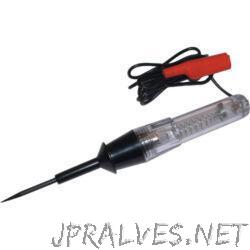Other
“This article describes a simple continuity tester, based on an ATtiny85 and a piezo buzzer, designed for checking circuit wiring, or tracing out the tracks on a PCB: It has a low threshold resistance of 50Ω to avoid false positives …

“So, you don’t have a multimeter? You can make this continuity tester at home. Circuit continuity tester is a device that indicate current can flow in electronic circuit. This equipment can detect whether there is a break in wire …

